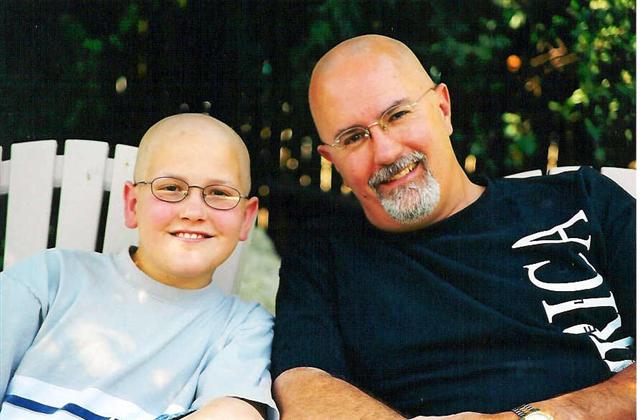Snap!
This is the longest I’ve gone without posting a blog entry. I’m not sure I can explain why. I think it was overload. It feels like a tsunami of political idiocy came ashore without warning and swamped my processing capacity. It began with a spate of Republican sniper shots that included:
John Boehner, the House Republican Leader, saying, "I listen to my Democrat friends and I wonder if they’re more interested in protecting the terrorists than protecting the American people." That’s political idiocy.
Dick Cheney going on national TV and saying that anybody who questions the administration is “emboldening the enemy”, adding that these questioners are “morally and intellectually confused”. More idiocy.
Tony Snow confirming in a press briefing that the confused people include Republican Senators Warner, McCain and Graham, and former secretary of state, Colin Powell. More idiocy.
Donald Rumsfeld, never wanting to be left behind in the hyperbole competition, trumping everyone by comparing anyone who questions the administration’s strategy in Iraq to Nazi appeasers. More idiocy.
So, there it is, in such simple terms. Anyone who disagrees with anything that George W. Bush and his merry band of warriors decides to do is aiding and abetting the enemy or, at best, appeasing the enemy, due to moral and intellectual confusion. These terms are so simple that even a child can understand them. These terms are so simple that only a simpleton can accept them.
This administration believes that this confusion is making appeasers even out of the Republican faithful. This administration believes that it is beyond question and above reproach from within or without. This administration believes that it and it alone is in full and sole possession of the light, the truth and the way, without exception, so help them, God. This administration believes that it has no need for a United Nations, or a United States Congress, or a U. S. Supreme Court, or the opinion of the American people, all of which are mere vessels of potential confusion, appeasement and enemy emboldening dissent that must be overcome through hyperbolic invective, ridicule and fear mongering.
Then, moving beyond mere verbal assault on every source or form of opposition, this administration leaped head first into what may be one of the most disturbing chapters in American history – their unprecedented insistence on abrogating the Geneva Convention in order to, among other things, secure the right to use “alternative interrogation methods” – aka torture – on prisoners of war, including those that until recently were held in secret and previously denied CIA prisons in countries that don’t have laws against torture.
The president almost became irrational when someone asked him if we were in danger of becoming like the torturers we cast from power in Iraq. Watching him get apoplectic when questioned about his intent was an indication that he considers himself accountable to no one other than himself and that he may be getting too close to losing whatever remaining grip he has on the responsible exercise of power.
Then along came the straw that broke the elephant’s back. We’re now being told about a recent National Intelligence Estimate, which reflects the collective opinion of all 16 American intelligence agencies, that concludes that there is now a greater threat from terrorism than there was when we invaded Iraq to bring an end to terrorism. The war on terror in Iraq, according to this NIE, is producing more terror not less. We are not safer, as the president would have us believe; we are in more danger now than we were on either 9/10 or 9/12, 2001, in large part because of actions we've taken since 9/11.
The point I want to make today is that sometime this weekend I snapped. I’ve come to the conclusion that this administration poses a serious threat to the security of the American people, perhaps as great a threat as “the enemy” it pretends to be defeating. This administration seems hell bent on a course of action that breeds rather than defeats terrorism. The Bush war on terrorism is failing; the Bush policy in Iraq is failing; not because of any military weakness or shortcoming, but because the Commander in Chief and his militant cohorts have severely misjudged the world situation; have set upon a deeply flawed strategy; and have failed to negotiate almost every tactical turn along the way.
This weekend I made a substantial monetary contribution to the Democratic Congressional Campaign Committee. That shows how loud the “snap” was in my head. I’m a lifelong Republican; I’ve voted for the Republican candidate for president in every election except two; I’ve voted overwhelming for other Republican candidates; I will vote overwhelming for Republican candidates this November; I have never contributed one thin dime to the Democratic Party or any of its flag bearers, until now.
I’ve taken this action because I believe that either the senate or the house, if not both, must be controlled by the Democrats for the next two years so that some restraint and balance can be reintroduced into the decision making in Washington. The president cannot be allowed to continue blindly pursuing his goals for another two years without meaningful opposition. The president can no longer be trusted with the power of his office if the power of congress cannot be a counterbalance when necessary.
I’m not the only one who has snapped. In the last week, several of my colleagues at work and one of my children, each of whom voted twice for this president, told me they no longer trust the president. If you don’t trust the President of the United States then you have to constrain the exercise of executive power through the constitutional means available to the electorate.
I never thought I’d see this day. I’m ready for a new day to begin.

